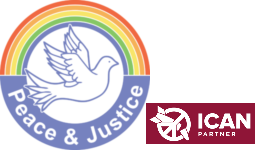DID YOU KNOW
Find out how the Peace Cranes project began

Portrait of Atsuko Betchaku. Image courtesy of Misao Betchaku
The Peace Cranes exhibition is dedicated to historian and pacifist, Atsuko Betchaku (1960-2017). As a teenager she visited Nagasaki where the atomic bomb was estimated to have killed 40,000 people and injured a further 60,000. But it was not until after settling in Edinburgh to pursue her PhD in history at the University of Edinburgh, and four decades following her Nagasaki visit, that she was compelled to launch a poignant project commemorating each of the 140,000 Hiroshima victims and illustrating our shared desire for peace and disarmament.
‘I was always wondering why Japan experienced two atomic bombs in Hiroshima and Nagasaki. My feeling was simply against war and no more Nagasaki and Hiroshima. After that I gradually learnt Japanese armies committed atrocities in other parts of Asia during the World War II. I also met people who congratulated the atomic bombs dropped in Japan. Wars divide people and Japanese were dehumanised. Without dehumanisation, such a devastating bomb would not have been utilised. Depending on the political context, any group could be victimised. We can get rid of nuclear weapons if we can get rid of wars and discriminations.’ Atsuko Betchaku
In 2015, as the global peace movement marked the 70th anniversary of the atomic bombing of Japan, as a member of Peace & Justice Atsuko embarked on an international collaborative project of folding 140,000 origami peace cranes.

Peace & Justice is one of the organisations that campaigned for a global ban on nuclear weapons. The Treaty on the Prohibition of Nuclear Weapons entered into force on 22 January 2021. In 2017 the International Campaign to Abolish Nuclear Weapons – of which Peace & Justice is partner – won the Nobel Peace Prize for this work.
In 2019, with the support of Peace & Justice members, volunteers and other activists from Scotland, Japan, England, Wales, France and Canada, Peace & Justice realised Atsuko’s goal of folding 140,000 peace cranes.
With official ceremonies restricted and other commemoration events taking place online in 2020 due to the COVID-19 pandemic, Peace & Justice marked the 75th anniversary of Hiroshima and Nagasaki with a five hour pre-exhibition Peace Cranes programme that ran from 6 to 22 August 2020. It featured live theatre performances, artist’s films, storytelling sessions and curatorial talks, artist’s Q&A and an origami peace crane folding masterclass – all free and available to watch again here.

Folding paper cranes is done in memory of the children killed by the Hiroshima and Nagasaki bombs because of the story of Sadako Sasaki (1943–1955) – a Japanese girl who was just two years old, living in Hiroshima when the atom bomb was dropped. Sadako later developed leukaemia and while in hospital heard the legend that anyone who folded 1000 paper cranes would have their wish granted. Wishing for peace Sadako set out to fold one thousand paper cranes before she died aged 12. There is a statue of Sadako holding a golden crane stands in the Hiroshima Peace Memorial Park
The atomic bomb dropped in Hiroshima on 6 August 1945 killed 140,000 citizens. Nowadays each nuclear warhead held by the UK is considered eight times more powerful than the one dropped in Hiroshima. If it is simply multiplied by eight, 1.12 million more than one fifth of the Scottish population would be dead. Later this year it is planned that the British government will renew Trident, the Britain’s nuclear weapons system, costing £182bn. Currently, Britain holds four nuclear submarines and 215 nuclear warheads. Faslane, near Glasgow, is home to such nuclear weapons in the UK.
CHECK HERE FOR ALL OTHER CURRENT, UPCOMING AND PAST EXHIBITIONS AND EVENTS AS PART OF THE PEACE CRANES PROJECT


Pingback: Page not found | Peace and Justice
Pingback: Hiroshima Survivors Visit Peace and Justice Centre | Peace and Justice
Pingback: International Campaign to Abolish Nuclear Weapons awarded Nobel Peace Prize – Peace and Justice
Pingback: Hearing First Hand From A Hiroshima Survivor – Peace and Justice
Pingback: Peace Cranes – ILIYANA NEDKOVA
Pingback: Peace Cranes – ILIYANA NEDKOVA